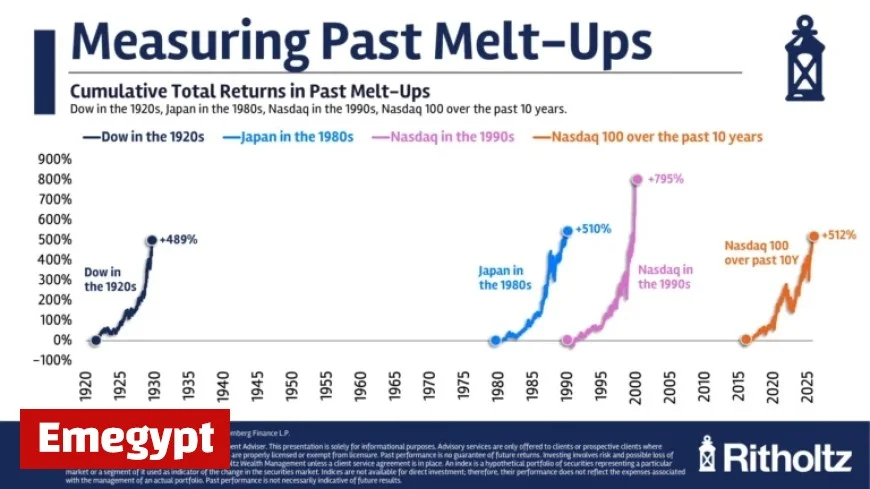Stock Market Escalates Rapidly in Significant Melt-Up

The Nasdaq 100 has demonstrated remarkable growth over the last decade. Annual returns have reached almost 20% since March 2009. This performance positions it among the most impressive bull markets in financial history. Notably, the top 10 companies in the index now account for more than half of its total market capitalization.
Understanding the Current Market Dynamics
Amidst soaring valuations, discussions about potential market bubbles have intensified. Such bubbles are complex, influenced by a mix of quantitative data and qualitative factors. Here’s a comparative look at the Nasdaq 100’s performance over the past decade, against historical bubbles:
- The Roaring 20s
- Japan’s bubble in the 1980s
- The dot-com boom of the 1990s
The annual returns for the Nasdaq 100 over the past ten years show an alarming similarity to these historical periods. While current levels are not at the extreme highs seen during the dot-com era, they are alarming when compared to other significant market bubbles.
Past Performance and Future Predictions
The Nasdaq 100 faced a significant crash after the dot-com bubble burst, plummeting more than 80%. During the period from 2000 to 2008, the Nasdaq sustained a total loss of 50%, averaging a decline of 8% per year. Following this downturn, between 2000 and 2013, the index managed just a 1% total return over 14 years—a stark contrast to the current bull run.
More recently, the annualized return from 2000 to the present is about 8.4%, reflecting both the prior bear market and the current bull market’s rapid rise. This volatility prompts questions about the sustainability of such growth. Investors wonder if the tech sector can maintain its stunning trajectory indefinitely.
The Need for Diversification
As tech stocks continue to thrive, a pivotal consideration emerges: diversification. Concentrating investments in technology has historically yielded substantial returns. However, to mitigate risks associated with potential market corrections, diversification is advisable.
In conclusion, while tech stocks may have had a fruitful decade, a prudent strategy would involve spreading investments across various sectors. This approach can help manage the inherent risks of future market fluctuations.































